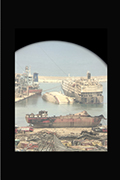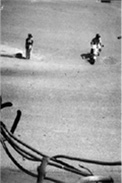#crisisbillboards2020 - 2024
Lebanon is currently grappling with a deep economic crisis after successive governments piled up immense debt. Overnight, the Ponzi scheme installed by the Bank’s central governor since the end of the civil war has crumpled. Banks, main beneficiaries of this lucrative “Financial Engineering”, have blocked savers accounts. The currency has crashed, driving 80% of the population into poverty. Weekly grocery bills can equal months of a typical family’s income.







